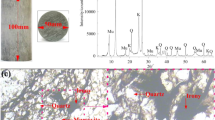Abstract
Many experimental investigations have previously been performed and recently done on different shipbuilding structural steels where the specimens size and crack depth/specimen width (a/W) were varied. A series of interesting results have been gained. It is worthwhile to have a review on the effect of a/W ratio on fracture toughness, and further theoretical analysis is necessary. In this paper, experimental work in elasticplastic fracture mechanics (EPFM) was discussed. Tests had been carried out on 10 kinds of strength steels. Results showed that J i and δ1 values increased with decreasing a/W when a/W<0.3 for three-point bend specimens and that shallow crack specimens which have less constrained flow field give markedly higher values of toughness than deeply notched specimens. However, for a/W>0.3, the toughness was found to be independent of a/W. Slip line field analysis shows that for shallow cracks, the hydrostatic stress is lower than that from standard deeply cracked bend specimen which develops a high level of crack tip constraint, provides a lower bound estimate of toughness, and will ensure an unduly conservative approach when applied to structure defects especially if initiation values of COD/J-integral are used.
Similar content being viewed by others
References
B. S. 5762, Crack Opening Displacement (COD) Testing [S]. 5762.
COTTEREL B, LI Q F, et al. On the effect of plastic constraint on ductile tearing in a structural steel [J]. Eng Fract Mech, 1985, 21: 239–244.
SHEN Wei. Single-point method of calculating J-integral [J]. Journal of Huazhong Engng Institute, 1978 (2): 20–24.
LIN J. A general formula of J-integral calculating for both shallow and deep cracks [J]. J of Harbin Shipbuilding Eng Inst, 1987, 8: 68–73 (in Chinese).
LI Q F, ZHOU L M, LI S. The effect of a/W ratio on crack initiation values of COD and J-integral [J]. Eng Fract Mech, 1986, 23: 925–928.
LI Q F. A study about J i and δ1 in three-point bend specimens with deep and shallow notches [J]. Eng Fract Mech, 1985, 22: 9–15.
CHIPPERFIED C G. Some observation on ductile crack initiation and propagation in fracture toughness specimens [A]. Proceedings of specialist meeting on elasto-plastic fracture mechanics [C]. OECP Nuclear Energy Agency, Daresbury, 1978, 2: 15–19.
LI Q F, ZHANG L. Effect of several variables on J-COD relationship and plastic rotational factor r P [J]. Eng Fract Mech, 1986, 53: 473–480.
LI Q F, SHI D. The effect of a/W ratio and crack shape on J i and δ1 values in a ship plate steel [A]. Proceedings of the IOPE-91[C]. Edinburgh, 1991: 137–141.
Huang X D. A study about elastic-plastic fracture with deep and shallow crack [R]. Harbin: Harbin shipbuilding Engineering Institute, 1987.
LI Q F, QIU B H, CUI X F. Effect of plastic constraint on ductile fracture in structural steels [A]. Proc of IWMST02 [C]. Tokyo, 2002: 83–85.
LI Q F. The effect of plastic constraint on the initiation of ductile tears in shipbuilding structural steels [J]. Journal of Marine Science and Application, 2003, 2: 1–4.
Author information
Authors and Affiliations
Rights and permissions
About this article
Cite this article
Qing-fen, L., Guo, J. & Yan-bo, W. A review of the effect of a/W ratio on fracture toughness (I) —Experimental investigation in EPFM. J Mar. Sc. Appl. 4, 1–7 (2005). https://doi.org/10.1007/s11804-005-0037-9
Received:
Issue Date:
DOI: https://doi.org/10.1007/s11804-005-0037-9




